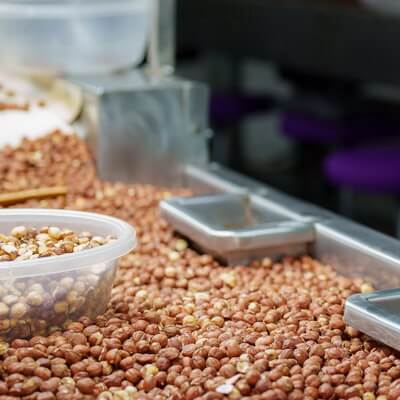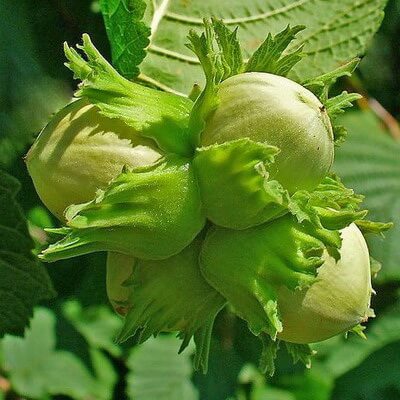Georgia has a rich, centuries-old history of hazelnut cultivation, and the climate and soil conditions create the perfect environment for these delicious nuts to thrive.
Hazelnut production plays a critical role in Georgia's agricultural sector, contributing significantly to the economy and providing employment opportunities for many people in the region.
Hazelnut orchards in Georgia are located mainly in the regions of Samegrelo, Guria, Imereti and Adjara. These regions offer ideal climatic and soil conditions for growing hazelnuts.
Favorable climatic conditions and government support have allowed Georgia to become one of the leading hazelnut producers in the world.


Georgia's mild climate with warm summers and mild winters provides an ideal environment for hazelnuts to thrive. This contributes to the high quality and yield of Georgian hazelnuts.
Advances in technology have revolutionized hazelnut farming in Georgia, with modern methods and equipment helping farmers increase yields and overall crop quality.
Several dozen endemic species grow in Georgia, the main ones being: Anakliuri, Berdznula, Gulshishvela, Nemsa, Shveliskura, Khachapura, etc.
The government of Georgia has implemented various support and incentive programs to promote hazelnut cultivation. These include subsidies to farmers, technical assistance and research initiatives to improve production methods.
The government of Georgia is investing in research and development to unlock the secret to increasing hazelnut production. Scientists and researchers are working tirelessly to improve growing methods, pest control techniques and the overall quality of the nuts. These investments are aimed at ensuring that Georgia remains a key player in the global hazelnut market.
The government has introduced export promotion programs to help local producers attract nut lovers around the world. Through initiatives such as trade fairs, marketing campaigns and export subsidies, Georgia aims to make its hazelnuts the talk of the world.
Navigating the export world can be a challenge, but Georgia is up to the task! The country has put in place export regulations and trade agreements to ensure hazelnuts have a smooth path to international markets.
The nut industry plays an important role in Georgia's economy, contributing to the country's GDP and export revenues. Hazelnut exports are a key driver of agricultural growth and export revenues.
Hazelnut cultivation and processing provides employment opportunities for many Georgians, especially in rural areas where hazelnut orchards are located. The sector creates jobs in agriculture, harvesting, processing and exporting, providing livelihoods and economic development.
Georgian hazelnuts are a hit in the global market! Key countries such as the United States, the European Union and Turkey can't get enough of these crunchy treats, creating a high demand for Georgian hazelnuts.
As for hazelnuts, Georgia will not break under pressure! They meet strict quality standards and are certified to ensure that each nut meets the highest international quality standards.
As demand for hazelnuts around the world continues to skyrocket, Georgia is looking for new markets to distribute its nutty treats. Emerging markets in Asia, the Middle East and beyond are hungry for Georgian hazelnuts like never before. With an emphasis on quality and flavor, Georgia is ready to offer its nutty treasures to eager consumers around the world.
From hazelnut paste to roasted nuts, consumers around the world are going crazy for hazelnut products from Georgia. With the growing preference for healthy and natural snacks, hazelnuts are becoming a pantry staple for many nut lovers. Known for its rich flavor and quality, Georgia hazelnuts are winning the hearts (and taste buds) of consumers looking for a nutty treat.
Georgia is going green in the hazelnut industry! By embracing sustainability initiatives in hazelnut farming, the country is laying the groundwork for long-term growth, ensuring that future generations will also be able to enjoy these nutty delicacies.
Organic hazelnut farming is on the rise, with farmers abandoning chemicals and pesticides in favor of natural and sustainable methods.
The hazelnut industry in Georgia is redoubling conservation efforts to protect Georgia's natural resources. From water conservation to wildlife protection, stakeholders in the hazelnut sector are passionate about preserving the environment for future generations.
The hazelnut industry in Georgia continues to thrive, contributing significantly to the state's economy and agricultural landscape. Despite the challenges, Georgia hazelnut farmers are demonstrating resilience and innovation in their growing practices.
With a rich history, current challenges, and promising opportunities on the horizon, the future of hazelnut production and exports from Georgia remains dynamic and critical to the country's prosperity. With continued state support, growing global demand for hazelnut products and a commitment to sustainable agriculture, the future of Georgia's hazelnut industry looks promising.
As the sector evolves and adapts to changing market dynamics, the flavors of Georgian hazelnuts will continue to appeal to consumers around the world, showcasing the country's rich agricultural heritage and economic potential.